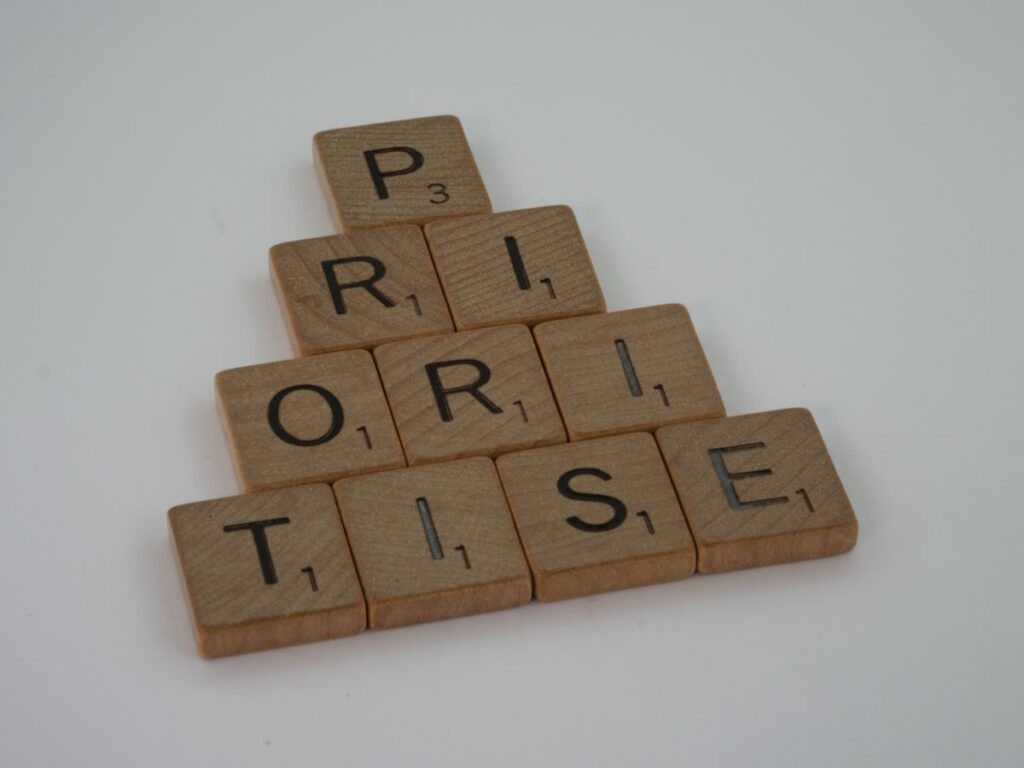
Within a Westernised digital society, we use screens every day for a wide variety of tasks. Researchers, practitioners, clinicians, paediatricians, and parents have been interested in the concept of “screen-time” for some time, especially around how this may be associated with negative physical and psychological health. This has been especially evident in discussions pertaining to children and young people.
Whilst there has been a wealth of research in disciplines such as psychology, psychiatry, clinical practice, social work, and medicine which focuses on how “screen-time” relates to sedentary behaviour (Busschaert et al. 2016); Body Mass Index (BMI; Lajunen et al., 2007), sleep quality and quantity (Hale & Guan, 2015), depression, loneliness and anxiety (Twenge, 2019; Twenge & Campbell, 2018), this topic is highly volatile. That is, many studies fail to show any compelling negative effects of “screen-time” (Vuorre et al., 2021; see Ferguson et al., 2021 for recent meta-analysis) and thus, the evidence is far too mixed to conclude any consistent or causal, long-term impacts of “screen-time” (Odgers & Jensen, 2020; Orben, 2020).
There are a wide range of reasons why the literature is so mixed. One of these relates to the fact that “screen-time” as a concept (and therefore how it is measured) is highly elusive. If I was to ask you the question “How many hours did you use screens in the last 7 days?” or “How many hours on average, do you use screens per week?” I doubt that you would be able to provide an accurate estimate. Unfortunately, most research which has studied this topic has used such estimates as the main measurement for its “screen-time” variable. Research shows that we are rather terrible at accurately estimating our technology use, as is evident when comparing our estimates with our objective use via screen-time apps (see Parry et al., 2021 for recent review). People’s reference points of “screen-time” will be rather varied too, in which some may include educational or work screen uses, for example whilst others may not. As such, a vast majority of research in this area has a very weak conceptual and methodological basis for drawing out what “screen-time” refers to and thus it is not a surprise that there are so many inconsistencies in the literature.
Given the aforementioned limitations, I was glad to see a new paper on this topic which seeks to understand priority research areas and importantly obtain the views of young people about their “screen-time” to better capture stakeholder perspectives in how to advance this research area (San Juan et al, 2022).

“Screen-time” and its consequences has been at the centre of much volatile debate. This paper sought to understand priority research areas and obtain the views of young people in how to advance this research area.
Methods
The research followed an established process as outlined by the James Lind Alliance Priority Setting Partnership approach. This involved a mixed-methods approach within a phased consensus and consultation based process. This involved drawing in a variety of participatory approaches ranging from expert steering group members (e.g., researchers, clinicians) to stakeholder groups (young people, parents, teachers). This commenced with the research team drawing on the expertise from existing research by developing a list of research questions and seeking expert researchers’ views on this list (via an online questionnaire or telephone call). This list was then refined with stakeholder groups. This allowed the researchers to co-create a list of priority research questions, but with related reflections and rich discussions from stakeholder focus groups to provide narrative around these areas. Finally, the refined list was circulated for public consultation via an online ranking exercise with young people, parents/carers, and teachers.
Within this, I was glad to see that some effort was made by the researchers to distinguish personal and recreational screen use as a focal point of the research rather than “screen-time” which falls to recognise the wide variety of contexts in which screens may be used. Having said that, some of these wider contexts are drawn upon in the findings, suggesting that some participants are reflecting on issues beyond personal and recreational use. This is most likely as a result of stakeholders such as teachers being included as a participatory group, where arguably they are primarily reflecting on the educational contexts of screen use and thus these views conflate the primary focus the authors had intended for this research. This is not to say that these views are not valid (they are), but rather that these muddy the water a little when understanding issues relevant to “personal and recreational” screen use.
Results
An overarching finding highlighted the need to focus on “screen use” rather than “screen time” especially given the fact that the latter of these conflates the wide range of screen uses which may occur for leisure or recreational purposes with those such as for educational purposes. Findings primarily are situated around the top average ranking of importance of the priority research questions and discussed in relation to extracted themes from stakeholder focus groups.
In terms of the top ranked questions, these include; impacts of adult content (e.g. violent or sexual content) on youth, effects for vulnerable groups (e.g. those with mental / physical health conditions, disabilities or learning difficulties), impacts on social and emotional development (which are headed under “brain development”, but focus group discussions don’t really align to this) and sleep-related issues which may mediate the link between screen use and well-being.
I was especially intrigued by the priority area of “impacts of screen use brain development” as clearly this was deemed relevant by experts but young people and other stakeholders did not appear to interpret this as was anticipated. Instead, discussions and subsequent themes related more to social, communicational and emotional aspects of development, thus presenting added value of including stakeholder perspectives here.

The top ranked research priorities were: impacts of adult content on youth, effects for vulnerable groups and impacts on social and emotional development.
Conclusions
The researchers concluded that stakeholders’ views have enriched understanding about what priorities should be the focus of research on the topic of screen use and mental health. They note that more evidence is needed to identify the potential risks and benefits of screen use. Whilst I agree with this sentiment, and why user-centred perspectives are valued here, I’m not overly convinced that the findings provide novel insights which go above and beyond what is already available in the existing literature and public policy. I do, however, hope that this paper will provide a basis for additional research to mobilise the priority areas and also recognise value in young people’s views that screen use rather than “screen-time” is required when exploring these issues.
I think it is particularly noteworthy that views from young people focus rather strongly on content-related issues in respect of screen-time (e.g., advertisements, adult content). I feel this is especially important as it highlights what critics of “screen-time” (myself included) have been saying for some time; that conceptualisations need to move away from time per se and instead focus on issues such as what content is being engaged with (Orben, 2022), and integrate much more holistic theoretical approaches to this issue (Orben et al., 2020). Young people themselves discuss that “screen use” rather than “screen-time” is more useful as a focus and this entirely aligns with my own sentiments that I have discussed in this field (Kaye, 2022; Kaye et al., 2020).

Young people felt that research should be focussing on “screen use” rather than “screen time”.
Strengths and limitations
This research has adopted a much-needed participatory approach to the research topic by involving key stakeholders within a consultative process. In our own work on the elusive topic of “screen-time”, we made specific recommendations that research in this area should do more to involve user-centered approaches to better inform conceptualisation of “screen-time” (Kaye et al., 2020). I was really pleased to see that this approach was at the heart of this paper and arguably has been highly fruitful to draw out key issues.
Whilst I liked the principles of the research in drawing in stakeholder perspectives, the researchers approach the issue of screen use and mental health from a rather narrow perspective. Although they make reference to the limitations of existing work being restricted and reductionist by omitting to consider type and context of screen use, they also appear to draw on the assumption that these may relate without particularly acknowledging the wider contexts of screen use and myriad of factors which may also relate to mental health beyond screen use. As such, there seemed to be a lot of absent discussion, and existing literature which could have enriched the narrative on this topic, and subsequently that which could have fed into the selection of priority research questions.
Moving beyond this to consider screen-related behaviours on social media, the authors note some work on active versus passive use of social media more specifically. Here, they state that active use of social media promotes social connectedness and social capital whilst passive use promotes social comparison. I would have liked further scrutiny of this literature especially in line with recent interrogation of the active/passive dichotomy (Valkenburg et al., 2022a, 2022b).
Additionally, I am often left hanging on the issue of how “active” use of social media being discussed positively here then works concurrently with the observations (which the authors next move on to in their discussion) that excessive use is linked to mental health problems. If the research is observing active use to be a great way to develop social connectedness and similar, which other research suggests to be positive for well-being (Kaye & Quinn, 2020), then why should greater use of this then relate to problems with mental health? I am yet to see any real interrogation in the wider literature about how these two observations relate to one another.

If “active” social media use promotes social connectedness and social capital, why does greater “active” use relate to mental health problems?
Implications for practice
Young people’s concerns about adult content (violent, pornographic content) being accessible (and in some cases targeted towards them) is a particular priority in current UK Government policy via the Online Safety Bill. These fall under its classification of content which is legal but harmful and as such the current findings illuminate why this Bill should include these categories in this legislation in the interests of protecting users.
As noted previously, I would be hopeful that further research will be informed by the insights from this research, and therefore take a more concerted approach of understanding screen use (rather than “screen-time”) but additionally proffer some insights into the wider contextual questions about screen use and mental health rather than assuming simple, linear and casual links.

We should not assume that the links between screen use and mental health problems are simple, linear and causal.
Statement of interests
Whilst I do not believe I have any conflicts of interest, I do have specific interests which I note here for transparency. The first of these, is that I have written position papers on the issue of “screen-time” which are included in my review and thus should alert readers to my own informed perspectives on this topic. Finally, I have also been consulted as part of my role as Chair of the British Psychological Society’s Cyberpsychology Section on the Online Safety Bill which is mentioned in the review. Whilst I did not have any direct input on writing the Bill, my informed perspectives have been sought on multiple occasions in consultations, briefings and responses relating to the Bill.
Links
Primary paper
San Juan, N. V., Oram, S., Pinfold, V., Temple, R.,Foye, U., Simpson, A., Johnson, S., Hardt, S., Abdinasir, K, & Edbrooke-Childs, J. (2022). Priorities for Future Research About Screen Use and Adolescent Mental Health: A Participatory Prioritization Study. Frontiers in Psychiatry, 13
Other references
Busschaert, C., Ridgers, N. D., De Bourdeaudhuij, I., Cardon, G., Van Cauwenberg, J., & De Cocker, K. (2016). Socio-demographic, social-cognitive, health-related and physical environmental variables associated with context-specific sitting time in Belgian adolescents: A one-year follow-up study. Plos One, 11(12), e0167553. doi:10.1371/journal.pone.0167553
Ferguson, C. J., Kaye, L. K., Branley-Bell, D., Markey, P., Ivory, J. D., Klisinan, D., Elson, M., Smyth, M., Hogg, J. L., McDonnell, D., Nichols, D., Siddiqui, S., Gregerson, M., & Wilson, J. (2022). Like This Meta-analysis: Screen Media and Mental Health. Professional Psychology: Research and Practice. 53(2), 205–214. https://doi.org/10.1037/pro0000426
Hale, L., & Guan, S. (2015). Screen time and sleep among school-aged children and adolescents: A systematic literature review. Sleep Medicine Reviews, 21, 50-58.
Kaye, L. K. (2022). Issues and Debates in Cyberpsychology. Open University Press
Kaye, L. K., Orben, A., Ellis, D. A., Hunter, S. C, & Houghton, S. (2020). The Conceptual and Methodological Mayhem of “Screen-time”. International Journal of Environmental Research and Public Health, 17 (10), 3661.
Kaye, L. K. & Quinn, S. (2020). Psychosocial outcomes associated with engagement with online chat systems. International Journal of Human Computer Interaction, 36 (2), 190-198.
Lajunen, H-R., Keski-Rahkonen, A., Pulkkinen, L., Rose, R. J., Rissanen, A., & Kaprio, J. (2007). Are computer and cell phone use associated with body mass index and overweight? A population study among twin adolescents. BMC Public Health, 7 (24).
Odgers, C.L., & Jensen, M.R (2020). Annual Research Review: Adolescent Mental Health in the Digital Age: Facts, Fears, and Future Directions. Journal of Child Psychology and Psychiatry, 61 (3), 336-348.
Orben, A. (2020). Teenagers, Screens and Social Media: A Narrative Review of Reviews and Key Studies. Social Psychiatry and Psychiatric Epidemiology, 55, 407-414.
Orben, A. (2022). Digital diet: A 21st century approach to understanding digital technologies and development. Infant and Child Development, 31 (1), e2228.
Orben A., Weinstein, N., & Przybylski, A. K. (2020). Only Holistic and Iterative Change Will Fix Digital Technology Research. Psychological Inquiry, 31 (3), 235-241.
Parry, D., Davidson, B. I., Sewall, C., Fisher, J. T., Mieczkowski, H., & Quintana, D. S. (2021). A systematic review and meta-analysis of discrepancies between logged and self-reported digital media use. Nature Human Behavior, 5, 1535–1547
Twenge, J.M. (2019). More time on technology, less happiness? Associations between digital-media use and psychological well-being. Current Directions in Psychological Science, 28(4), 372-379. doi:10.1177/0963721419838244
Twenge, J.M. & Campbell, W.K. (2018). Associations between screen time and lower psychological well-being among children and adolescents: Evidence from a population-based study. Preventive Medicine Reports, 12, 271-283.
Valkenburg, P.M., Beyens, I., Pouwels, J.L., van Driel, I.I., & Keijsers, L. (2022a). Social media browsing and adolescent well-being: Challenging the “Passive Social Media Use Hypothesis”. Journal of Computer-Mediated Communication, 27, 1
Valkenburg, P. M., van Driel, I. I., & Beyens, I. (2022b). The associations of active and passive social media use with well-being: A critical scoping review. New Media and Society, 24 (2). 530-549. https://doi.org/10.1177/14614448211065425.
Vuorre, M., Orben, A., & Pzzbyski, A. K. (2021). There Is No Evidence That Associations Between Adolescents’ Digital Technology Engagement and Mental Health Problems Have Increased. Clinical Psychological Science, 9 (5), 823-835.
Photo credits
- Photo by Annie Spratt on Unsplash
- Photo by Brett Jordan on Unsplash
- Photo by Steinar Engeland on Unsplash
- Photo by Nathana Rebouças on Unsplash
- Photo by Kaleidico on Unsplash
- Photo by Hello I’m Nik on Unsplash
